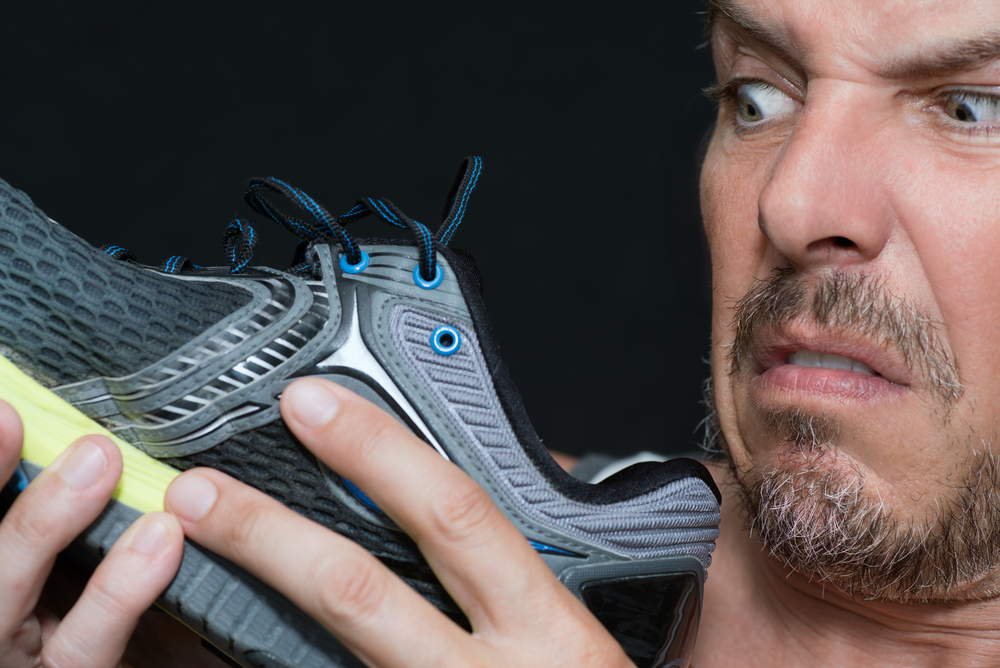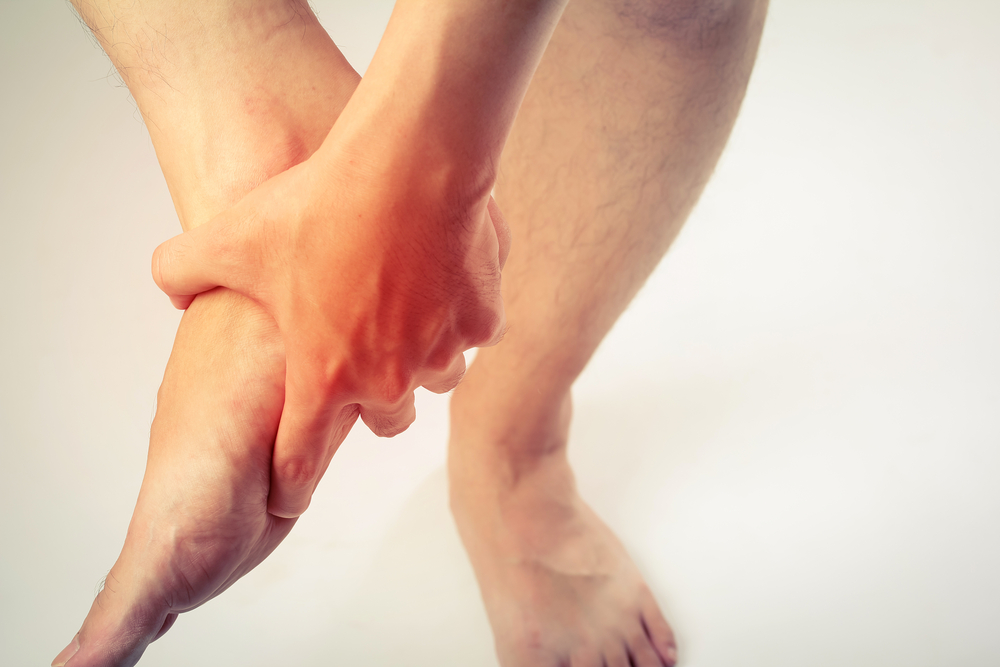
 People who have feet that sweat excessively may have a condition that is known as plantar hyperhidrosis. It may be the result of a neurological or endocrine disorder and can be quite uncomfortable. There are several treatment options, and this can depend on the severity of this ailment. Surgery may be a viable option for successfully removing the sweat glands. Patients who are afflicted with this condition often keep an extra pair of shoes and socks close by. It can be professionally and socially disabling, and many patients who have this condition are often embarrassed. If you think you may have hyperhidrosis, it is suggested that you schedule an appointment with a podiatrist who can offer you the correct treatment solutions.
People who have feet that sweat excessively may have a condition that is known as plantar hyperhidrosis. It may be the result of a neurological or endocrine disorder and can be quite uncomfortable. There are several treatment options, and this can depend on the severity of this ailment. Surgery may be a viable option for successfully removing the sweat glands. Patients who are afflicted with this condition often keep an extra pair of shoes and socks close by. It can be professionally and socially disabling, and many patients who have this condition are often embarrassed. If you think you may have hyperhidrosis, it is suggested that you schedule an appointment with a podiatrist who can offer you the correct treatment solutions.
If you are suffering from hyperhidrosis contact Dr. Robert Hope of Riverside Podiatry. Our doctor can provide the care you need to attend to all of your podiatric needs.
Hyperhidrosis of the Feet
Hyperhidrosis is a rare disorder that can cause people to have excessive sweating of their feet. This can usually occur all on its own without rigorous activity involved. People who suffer from hyperhidrosis may also experience sweaty palms.
Although it is said that sweating is a healthy process meant to cool down the body temperature and to maintain a proper internal temperature, hyperhidrosis may prove to be a huge hindrance on a person’s everyday life.
Plantar hyperhidrosis is considered to be the main form of hyperhidrosis. Secondary hyperhidrosis can refer to sweating that occurs in areas other than the feet or hands and armpits. Often this may be a sign of it being related to another medical condition such as menopause, hyperthyroidism and even Parkinson’s disease.
In order to alleviate this condition, it is important to see your doctor so that they may prescribe the necessary medications so that you can begin to live a normal life again. If this is left untreated, it is said that it will persist throughout an individual’s life.
A last resort approach would be surgery, but it is best to speak with your doctor to find out what may be the best treatment for you.
If you have any questions please feel free to contact our office located in Tuscaloosa, and Fayette, AL . We offer the newest diagnostic and treatment technologies for all your foot needs.
 If you are experiencing pain on the bottom of your heel, there is a good chance that you may have a condition known as plantar fasciitis. Plantar fasciitis is an irritation and inflammation of the plantar fascia, which is a connective tissue that links the heel with the toes. Because the plantar fascia is located on the sole of the feet, it helps absorb the body’s weight, and can become overly stressed during walking, running, and jumping movements. Plantar fasciitis is the most common cause of heel pain and can make it difficult to walk. Common risk factors for plantar fasciitis include making certain repetitive movements (as in running) obesity, sudden weight gain (as in pregnancy), or by having flat feet or high arches or a tightened Achilles tendon. If you believe you have plantar fasciitis, make an appointment with a podiatrist to be properly diagnosed and to receive prompt and proper treatment.
If you are experiencing pain on the bottom of your heel, there is a good chance that you may have a condition known as plantar fasciitis. Plantar fasciitis is an irritation and inflammation of the plantar fascia, which is a connective tissue that links the heel with the toes. Because the plantar fascia is located on the sole of the feet, it helps absorb the body’s weight, and can become overly stressed during walking, running, and jumping movements. Plantar fasciitis is the most common cause of heel pain and can make it difficult to walk. Common risk factors for plantar fasciitis include making certain repetitive movements (as in running) obesity, sudden weight gain (as in pregnancy), or by having flat feet or high arches or a tightened Achilles tendon. If you believe you have plantar fasciitis, make an appointment with a podiatrist to be properly diagnosed and to receive prompt and proper treatment.
Plantar fasciitis can be very painful and inconvenient. If you are experiencing heel pain or symptoms of plantar fasciitis, contact Dr. Robert Hope of Riverside Podiatry. Our doctor can provide the care you need to keep you pain-free and on your feet.
What Is Plantar Fasciitis?
Plantar fasciitis is the inflammation of the thick band of tissue that runs along the bottom of your foot, known as the plantar fascia, and causes mild to severe heel pain.
What Causes Plantar Fasciitis?
How Can It Be Treated?
Conservative measures - anti-inflammatories, ice packs, stretching exercises, physical therapy, orthotic devices
Shockwave therapy - sound waves are sent to the affected area to facilitate healing and are usually used for chronic cases of plantar fasciitis
Surgery - usually only used as a last resort when all else fails. The plantar fascia can be surgically detached from the heel
While very treatable, plantar fasciitis is definitely not something that should be ignored. Especially in severe cases, speaking to your doctor right away is highly recommended to avoid complications and severe heel pain. Your podiatrist can work with you to provide the appropriate treatment options tailored to your condition.
If you have any questions please feel free to contact our office located in Tuscaloosa, and Fayette, AL . We offer the newest diagnostic and treatment technologies for all your foot needs.
 Always measure your feet if you have any questions about your proper shoe size. You can measure your own feet with a tape measure or ruler, paper, a writing implement, and a chair to sit on while measuring your feet. First, tape the paper to the floor so it will not move. Second, sit on the chair and put one foot on the paper. Make sure to wear socks or foot coverings that you plan to wear with shoes before placing them on the paper. Third, outline the outside of your foot with your pen or pencil. Do this for both feet to check subtle differences that might be present between your feet. Fourth, measure from the tip of the heel to the longest toe of your foot and make a note of the numbers. Finally, do some simple math – subtract 3/16 from the measurement you wrote down to account for the difference between your foot and the shoe. The result is your shoe size! If you have trouble measuring your feet properly or find that you are still not able to find comfortably fitting shoes, see a podiatrist for help in measurements, and shoe suggestions, or to help you detect any other problems that might be going on with your feet.
Always measure your feet if you have any questions about your proper shoe size. You can measure your own feet with a tape measure or ruler, paper, a writing implement, and a chair to sit on while measuring your feet. First, tape the paper to the floor so it will not move. Second, sit on the chair and put one foot on the paper. Make sure to wear socks or foot coverings that you plan to wear with shoes before placing them on the paper. Third, outline the outside of your foot with your pen or pencil. Do this for both feet to check subtle differences that might be present between your feet. Fourth, measure from the tip of the heel to the longest toe of your foot and make a note of the numbers. Finally, do some simple math – subtract 3/16 from the measurement you wrote down to account for the difference between your foot and the shoe. The result is your shoe size! If you have trouble measuring your feet properly or find that you are still not able to find comfortably fitting shoes, see a podiatrist for help in measurements, and shoe suggestions, or to help you detect any other problems that might be going on with your feet.
Getting the right shoe size is an important part of proper foot health. Seek the assistance of Dr. Robert Hope of Riverside Podiatry. Our doctor will provide the care you need to keep you pain-free and on your feet.
Getting the Right Shoe Size
There are many people who wear shoes that are the incorrect size, negatively affecting their feet and posture. Selecting the right shoes is not a difficult process, so long as you keep several things in mind when it comes to choosing the right pair.
As our feet hold our body weight and keep us moving, it is important to treat them right. Picking the right pair of shoes can provide your feet comfort and mobility without pain.
If you have any questions please feel free to contact our office located in Tuscaloosa, and Fayette, AL . We offer the newest diagnostic and treatment technologies for all your foot needs.
 The tibial nerve in the ankle enables movement and feeling in areas of the foot. When this nerve gets compressed, it forms what is known as tarsal tunnel syndrome. This can happen as a result of a sprained ankle, or medical conditions that can include flat feet, high arches, or diabetes. Tarsal tunnel syndrome often causes severe pain and discomfort and is noticeable in the bottom of the foot and toes. Some of the tests that are performed to reach a diagnosis can include a nerve biopsy, and electromyography, which is a recording of electrical activity in the muscles. Treatment options can include resting and elevating the affected foot, and surgery may be recommended that can permanently reduce the pressure. Tarsal tunnel syndrome is diagnosed and treated by a podiatrist, and it is advised to consult with this type of doctor if you think you may have this condition.
The tibial nerve in the ankle enables movement and feeling in areas of the foot. When this nerve gets compressed, it forms what is known as tarsal tunnel syndrome. This can happen as a result of a sprained ankle, or medical conditions that can include flat feet, high arches, or diabetes. Tarsal tunnel syndrome often causes severe pain and discomfort and is noticeable in the bottom of the foot and toes. Some of the tests that are performed to reach a diagnosis can include a nerve biopsy, and electromyography, which is a recording of electrical activity in the muscles. Treatment options can include resting and elevating the affected foot, and surgery may be recommended that can permanently reduce the pressure. Tarsal tunnel syndrome is diagnosed and treated by a podiatrist, and it is advised to consult with this type of doctor if you think you may have this condition.
Tarsal tunnel syndrome can be very uncomfortable to live with. If you are experiencing tarsal tunnel syndrome, contact Dr. Robert Hope of Riverside Podiatry. Our doctor
can provide the care you need to keep you pain-free and on your feet.
Tarsal Tunnel Syndrome
Tarsal tunnel syndrome, which can also be called tibial nerve dysfunction, is an uncommon condition of misfiring peripheral nerves in the foot. The tibial nerve is the peripheral nerve in the leg responsible for sensation and movement of the foot and calf muscles. In tarsal tunnel syndrome, the tibial nerve is damaged, causing problems with movement and feeling in the foot of the affected leg.
Common Cause of Tarsal Tunnel Syndrome
The Effects of Tarsal Tunnel Syndrome
A physical exam of the leg can help identify the presence of tarsal tunnel syndrome. Medical tests, such as a nerve biopsy, are also used to diagnose the condition. Patients may receive physical therapy and prescriptive medication. In extreme cases, some may require surgery.
If you have any questions please feel free to contact our office located in Tuscaloosa, and Fayette, AL . We offer the newest diagnostic and treatment technologies for all your foot needs.